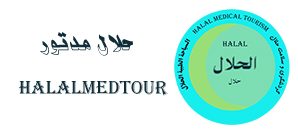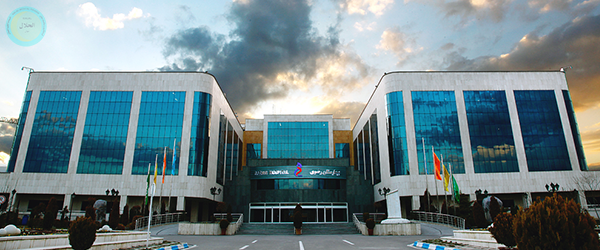Mashhad , also spelled Mashad or Meshad, is the second-most-populous city in Iran and the capital of Khorasan-e Razavi Province. It is located in the northeast of the country. It has a population of 3,001,184 (2016 census), which includes the areas of Mashhad Taman and Torqabeh. It was a major oasis along the ancient Silk Road connecting with Merv to the east.
Mashhad is located in Kashafrud River catchment basin and at the end of the Mashhad sedimentary plain, between Hezar masjid and Binalood mountains range, at the height of 1050m above the sea level with a mountainous and semi mountainous area which presents a moderate and variable climate.
This city consists of three districts “Markazi”, “Ahmad Abad” and “Razavi”, three cities and 11 rural districts. Mashhad is considered as the 2nd biggest and the populous city of Iran after Tehran due to it is religious, industry and economic conditions. Mashhad is known as the most important attraction for the passengers who are willing to visit Imam Reza holy shrine (8th Shia Imam), the biggest holy shrine in Iran.
As one of the most magnificent religious places in Iran, Astan Qods Razavi is the symbol of Mashahd where the Islamic art and religion are linked to each other. Located along the Silk Road, it is the economic capital and the intercontinental commercial center in the Central Asia. Mashhad economic activities are dependent on the services, industry and agriculture; however, it is focused on a services-based economy due to the presence of the passengers and pilgrims who travel to there. About 40 percent of Mashhad industry is relied on the food, metal and handicraft industry. Most of Mashhad people are of Iranian Aryan race, although many Kurds, Turks and Arabs live there. Mashhad residents speak in Persian Language, Mashhadi accent and they are the followers of Ja’afari Shia.
The city is named after the shrine of Imam Reza, the eighth Shia Imam. The Imam was buried in a village in Khorasan, which afterward gained the name Mashhad, meaning the place of martyrdom. Every year, millions of pilgrims visit the Imam Reza shrine. The Abbasid caliph Harun al-Rashid is also buried within the same shrine.
Mashhad has been governed by different ethnic groups over the course of its history. The city enjoyed relative prosperity in the Mongol period.
Mashhad is also known colloquially as the city of Ferdowsi, after the Iranian poet who composed the Shahnameh. The city is the hometown of some of the most significant Iranian literary figures and artists, such as the poet Mehdi Akhavan-Sales, and Mohammad-Reza Shajarian, the traditional Iranian singer and composer. Ferdowsi and Akhavan-Sales are both buried in Tus, an ancient city that is considered to be the main origin of the current city of Mashhad.
On 30 October 2009 (the anniversary Imam Reza’s martyrdom), Iran’s then-President Mahmoud Ahmadinejad declared Mashhad to be “Iran’s spiritual capital”.
Mashhad Medical Tourism
Mashhad Healthcare and Tourism city
Mashhad, located in northeastern Iran, is not only a major pilgrimage destination due to the presence of the Imam Reza Shrine but also an emerging hub for medical tourism. Here are some aspects of medical tourism in Mashhad:
- Quality Healthcare Facilities: Mashhad is home to several hospitals, clinics, and medical centers offering a wide range of medical services and specialties. These facilities are equipped with modern technology and staffed by skilled healthcare professionals, including specialists in areas such as cardiology, oncology, orthopedics, ophthalmology, and more.
- Imam Reza Hospital Complex: This large medical complex in Mashhad includes several hospitals and specialized centers, providing comprehensive healthcare services to patients. It is one of the main healthcare facilities in the city, offering a wide range of medical treatments and procedures.
- Ophthalmology Services: Mashhad is renowned for its ophthalmology services, with specialized eye hospitals and clinics offering advanced treatments for various eye conditions. Patients from within Iran and neighboring countries seek out these services, including procedures such as cataract surgery, corneal transplants, and refractive surgeries like LASIK.
- Infertility Treatment: Similar to other major cities in Iran, Mashhad offers infertility treatment centers providing advanced assisted reproductive technologies (ART) such as in vitro fertilization (IVF), intrauterine insemination (IUI), and intracytoplasmic sperm injection (ICSI). These centers cater to couples seeking solutions for infertility-related issues.
- Orthopedic Surgery: Mashhad has facilities specializing in orthopedic surgery and musculoskeletal treatments. Patients come for procedures such as joint replacements, spine surgeries, sports injuries treatment, and orthopedic trauma care.
- Cosmetic and Plastic Surgery: Mashhad has a growing sector in cosmetic and plastic surgery, offering various procedures to enhance appearance and address aesthetic concerns. This includes rhinoplasty (nose surgery), breast augmentation, liposuction, facelifts, and non-surgical treatments like botox and fillers.
- Wellness and Rehabilitation: Mashhad also offers wellness centers and rehabilitation facilities focusing on holistic health and wellbeing. These centers provide services such as physiotherapy, hydrotherapy, therapeutic massages, and alternative therapies, catering to individuals seeking relaxation, rejuvenation, or rehabilitation.
- Cultural and Spiritual Experience: In addition to medical treatments, patients visiting Mashhad can experience its rich cultural and spiritual atmosphere. The Imam Reza Shrine is a significant pilgrimage site attracting millions of visitors each year. Patients can explore the shrine complex, its courtyards, mosques, and museums, adding a unique dimension to their medical journey.
Overall, Mashhad’s medical tourism sector continues to evolve, offering quality healthcare services, advanced treatments, and a rich cultural experience for patients seeking medical treatments and spiritual fulfillment.

